Jaguar D Type History By Geoff Wheatley
Jaguar D Type History Photos and Stories.
Jaguar D Type History by Geoff Wheatley

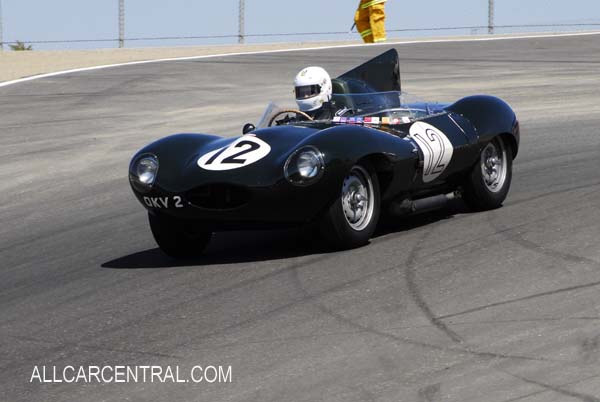
Jaguar D-Type sn-XKD403 1954
In the 1950's there was one British car that dominated
the racing world, the Jaguar D Type. Not only fast but
like its brothers out of the Jaguar Stable, simply
dramatic in design and style. You need quite a few
bucks to buy and own one of these cars and if you
wanted to put your foot down on some European or North
American race track the cost was equal to buying a few
1950's dwellings! There can be no doubt that this car
set the pace in more ways than one while some of the
world's most successful driver sat behind the wheel
and set new speed records. There were two versions of
this model the C type and of course the famous D Type.

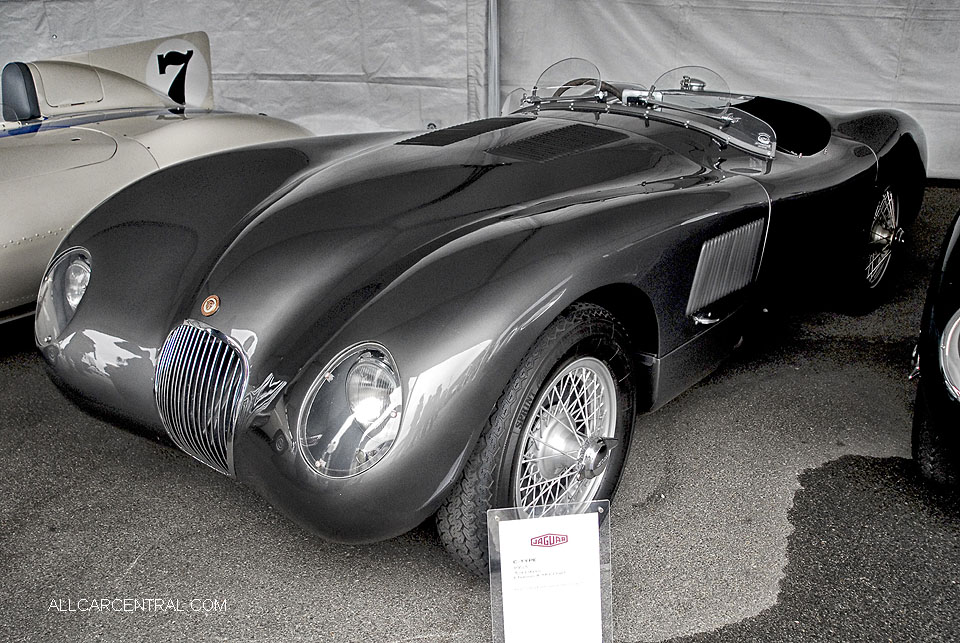
Jaguar C-Type sn-XKC040 1953
The C Type was in reality a redesigned version of the XK 120/140 with a new power unit and streamline design.

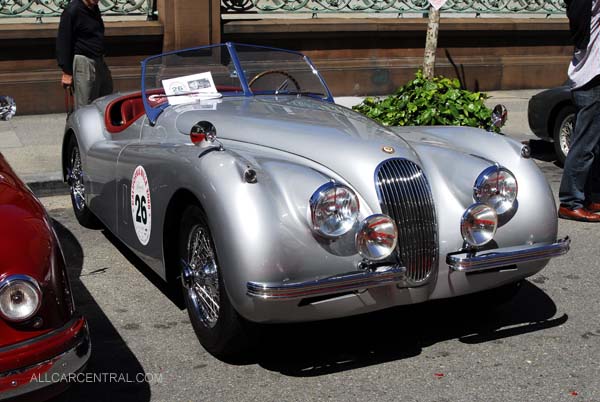
Jaguar XK 120 1953


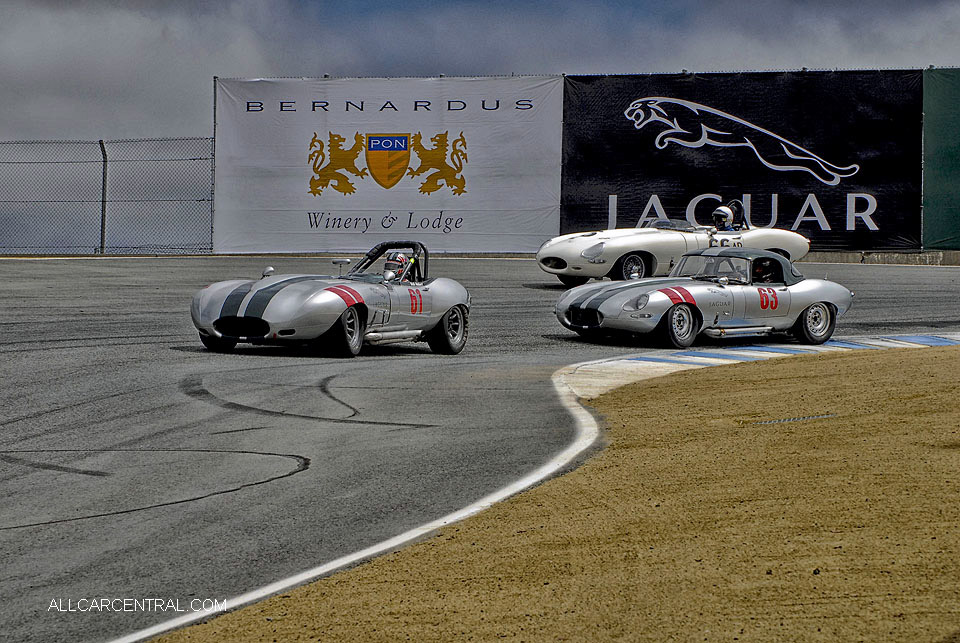
Jaguar E Type
The C Types' were certainly the forerunners to the E Type, a
car that deserves a future review by this scribe. The
Jaguar D saw the light of day in the spring of 1954.
Not only did it look like it should get a speeding
ticket standing still but it featured many new
improvements' that today we simply take for granted.
Example, alloy wheels, disc brakes developed by
Lockheed and first used in the 24 hour Le Mann's, and
a new fuel system that we now know as fuel injection.
Another interesting feature was the use of light alloy
in the construction. This had been featured in the
Jaguar C Type with success hence its use, (but not
total acceptance), there was doubts if this
construction would stand up to race conditions like
the twenty four hour Le Mann's. As we now know it did with remarkable success while
the Motor Media of the day decided to call these cars,
aircraft on wheels. To me the strange thing about all
this was that light alloy had been used on aircraft
for at least twenty years prior to the introduction of
race cars being constructed in much the same way, and
to my knowledge no one ever worried that the wings
etc., would fall off! No matter the point was simple
it worked and gave the car a distinct advantage over
steel bodied rivals.

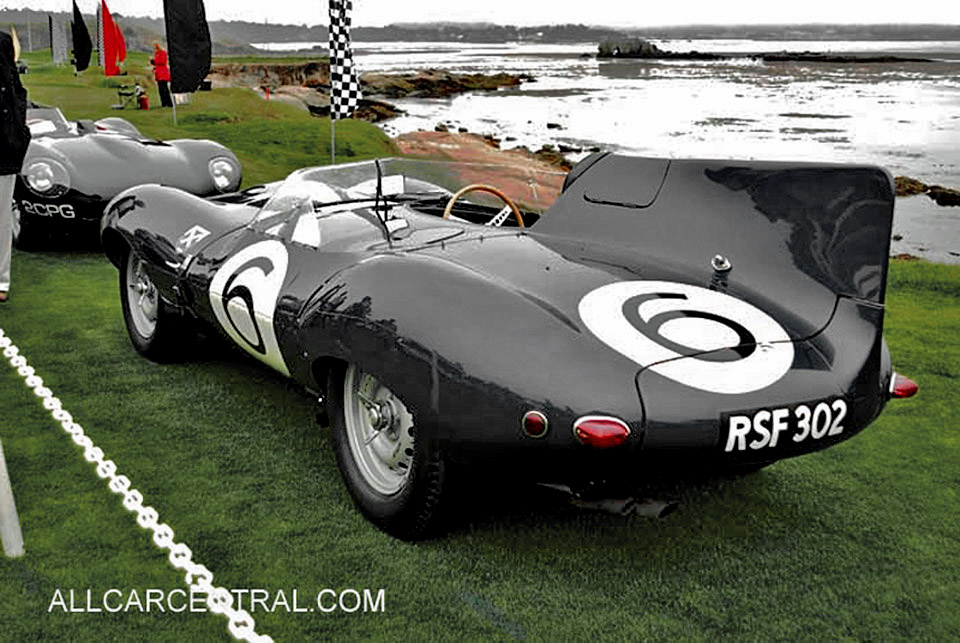
Jaguar D-type sn-504 1955

I have mentioned the effect of the styling on the D Type that certainly set a new standard of car design both in Europe and a few years later in North America. (Take a look at the project cars of the 1960's in the USA and you will see what I mean).
The man responsible for the design of the D Type was an engineer who had worked for the British Bristol Aircraft Company who, after the war, decided that they would try their hand at producing a hand built motor car for a select segment of the automobile market that were potential Rolls Royce customers who were a few buck short of ordering one! The Bristol saloon was quite a car. With an aircraft design tubular chassis modeled on the aircraft design of the day and a level of quality almost equal to the post war Roller...But not quite!
The engineer was Malcolm Sayer who's background and experience went back to the prewar days of aircraft design in the UK. Disappointed by the conservative attitude of the Bristol Motor Corporation re their post war design and his experience working in Italy for a couple of years before the war, he joined Jaguar as their senior design consultant. It is also interesting to note that during the short production period of the D Type the engine size was increased from 3.4 liters to 3.8 liters and later this engine size was repeated in the standard market for Jaguar cars. I recall that around 1960 I had 3.4 Jaguar that was, a couple of years later, replaced by the 3.8...Did it make much difference to a non competitive owner like myself? NO...All I recall was a higher fuel bill!

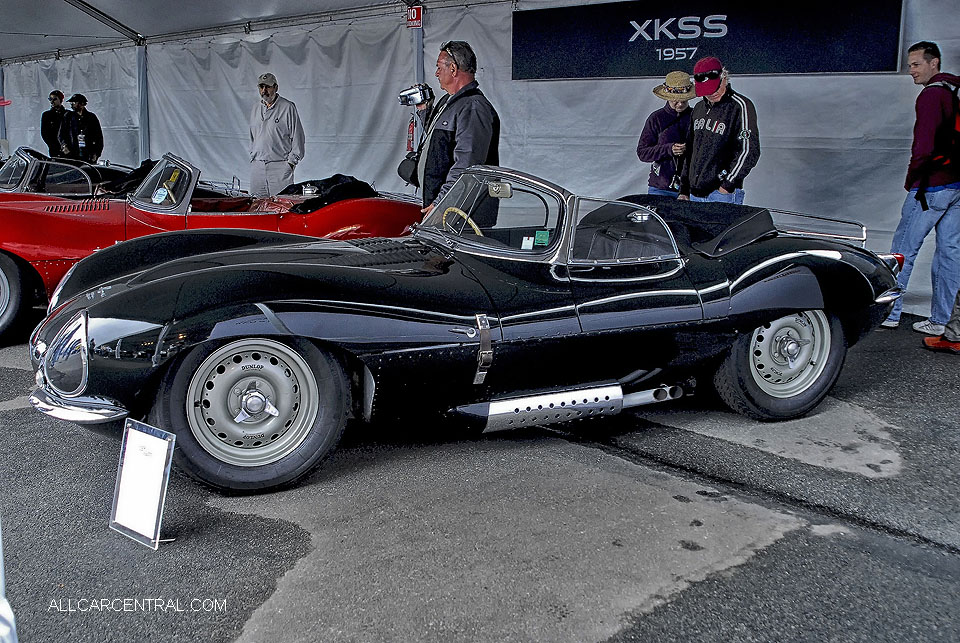
Jaguar XKSS sn-XKSS716-XKD575 1957 (Factory converted D Types to Road cars)
In the history of Motor events the three times win of the Jaguar D Type at the 1955/56/57 Le Mans speaks for itself. What's equally interesting is to note the production numbers for this car over a period of three years... Fifty five were produced and sold to private customers. Eighteen were part of the factory race team while another sixteen in the form of the special XK SS were produced and sold.
Would the market have been larger had the devastating fire at the Jaguar Works in 1959 not happened...? Who Knows? But it did, and in a way pushed the production of this unique racing car into the history books of modern motoring. Question. What is a Jaguar D Type worth today? In 1999 a D Type sold at auction for over two million US Dollars. A couple of year later another went for 2.8 million. Now for the substance of this review... The current owners of the Jaguar name and company have decided to produce a limited number of D Type Jaguars. Expected delivery some time in 2017, number to be produced, nine vehicles... Price... about one and a half million each, which is cheaper than the price paid for the same car in 1999.
What's the real story about this promotional offer?
After the fire nine cars were left out of an original
production figure of twenty five. The remaining cars
were kept on ice until it was decided to refurbish
them and offer them for sale. Now you may feel like
myself why would any international company like Jaguar
bother to resurrect a car from the past when they have
worldwide sales on their current models? Could it be
that someone within the international world of Jaguar
feel that there could be another market for a reborn
Racing Jaguar D Type with all the publicity that will
go with such an adventure! Stay tuned for further news
on this development..
Geoff Wheatley ©
UPDATE:
In response to my recent article on the D Type Jaguar I received this very interesting email from a one time employee of Jaguar. With his permission I am sharing the content with your readers. There is a multitude of interesting personal memories of our cars just waiting to be transferred into print. I continue to stumble on these gems as illustrated by this contribution. In short when you think you have heard it all a new chapter opens.. Geoff Wheatley
Interesting article and I can add just a little bit to it as I was a Jaguar Apprentice at the time mentioned. In fact, as an apprentice, I did work in the "Drawing Office" with Malcolm Sayer for a period, the apprentices worked in almost all departments, usually three months at a time. I said almost all departments, they kept us out of the trim shop, that is where all the girls were. He never mentioned to me that he had been with Bristol.
Re: the D Types.
About 70 were made, enough to qualify as a production car at the time, as Le Mans was considered a "Production Car Race" and that is what they were built for. Some were sold to private owners but there were a few left over in a storage facility and there they sat with no prospective purchasers.
For practical purposes they were a single seat racing car. Yes, there was a passenger seat of sorts, covered by an alloy tonneau panel and there was a "door" that swung out and down, it was easier to step over it in the closed position to get into the left hand side than it was to step over it in the open position as it stuck out like a wing when open. The curve of the body did not allow it to open very far. There was no windscreen on the left hand side. There was a metal strut running between the two seats separating the driver and passenger giving strength to body of the car.
Now these unsold cars had been sitting two years or more when a D type owner drove into the factory, there was a Service Department there. He had modified his D type, fitted a full width windscreen, looked to me as if iat had come from a speedboat, he had made a convertible top and had removed the strut between the seats and the car had not collapsed! I do not recall if he had removed the faring behind the driver's head, I suspect he had. The owner was taken out to a long lunch and while he was gone the engineers and other interested parties swarmed over the car to see just what had been done. Thus the XKSS was born.

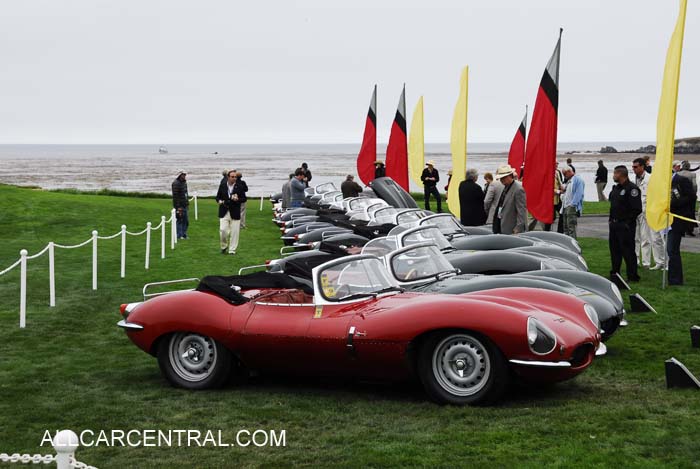
The un-saleable D types were to be converted to XKSS models with new VIN numbers. While this was in process the factory suffered a huge fire and many, if not all, of the cars in process were lost. I recall walking through the burnt out area the next morning where three D types had sat next to each other. Only the steel bits remained, engine block gear box, suspension arms and brake discs etc. The rest was white powder, dust. Three skeletons, side by side. So sad! Just think, had they been left in storage, the storage building did not burn, what they would be worth today.
Should you ask, yes, I have driven a D type, but only once.
Years later, working for Jaguar in New York, we were clearing out a parts warehouse and I came across a D type multi-plate clutch assembly, a work of art as far as machining went. It hurt but into the trash it went. ©

All Cars • • Racing • • VINTAGE • • Shows • • Gallerys • • Contact
